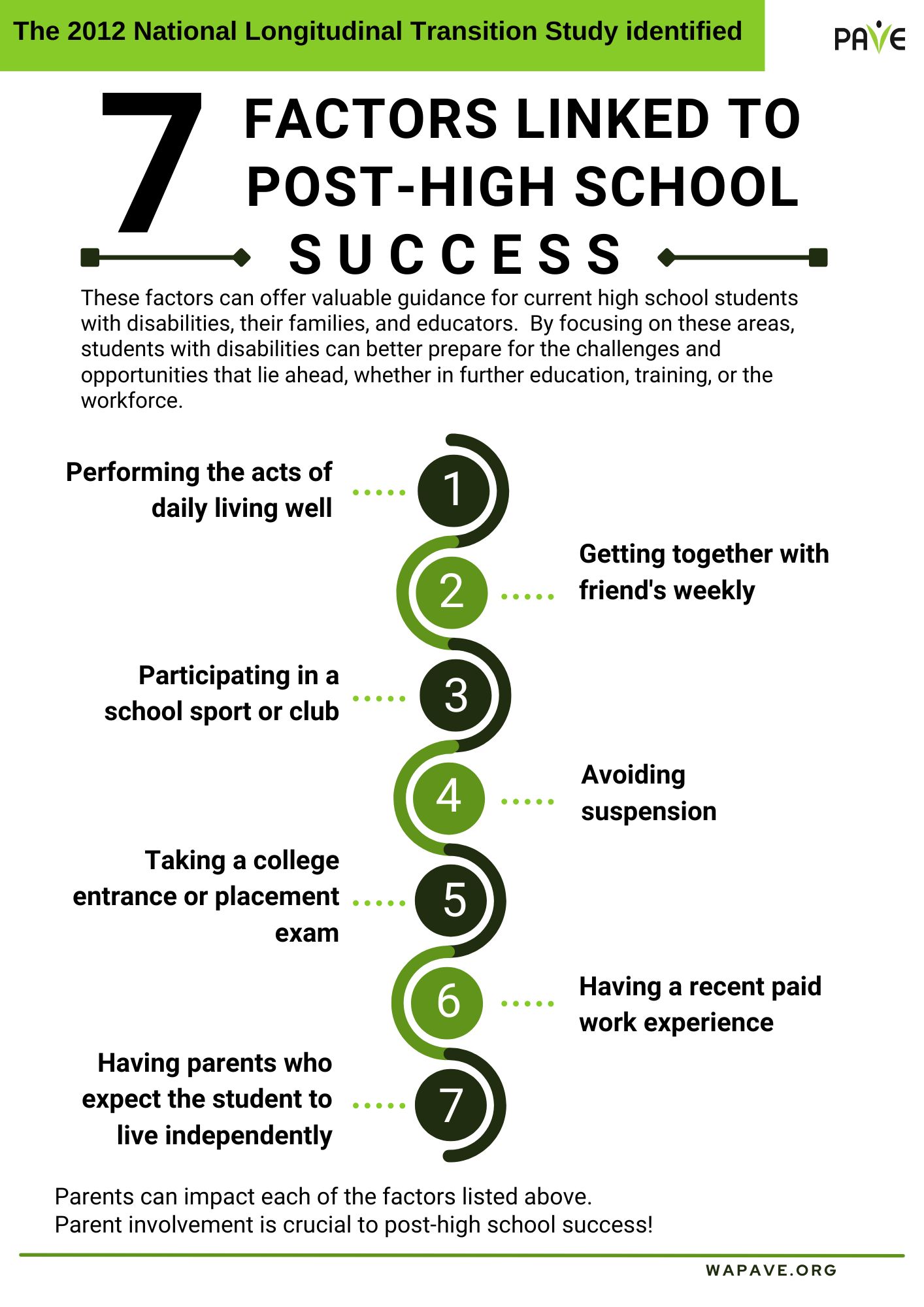A Brief Overview
- Students who did not make adequate progress on IEP goals due to COVID-19 may be eligible for Recovery Services. IEP teams are responsible to make individualized, student-centered decisions about this option for additional educational services.
- Students who turned 21 and “aged out” of their IEP services during the pandemic may be eligible for Transition Recovery Services. Read on for information and resources.
- Transition Recovery Services are funded through a combination of state and federal sources, including through the American Rescue Plan. Transition Recovery will be an option for several years—beyond Summer 2021.
Full Article
For students with disabilities, getting ready for life after high school can include work-based learning, career cruising, job shadowing, college tours, training for use of public transportation, community networking, agency connections, and much more. A student’s Individualized Education Program (IEP) is built to guide a student toward unique post-graduation goals.
COVID-19 halted the high-school transition process for many students. IEP teams are required to consider Transition Recovery Services to help those students get back on track toward post-secondary goals, including if they “aged out” by turning 21.
Transition Recovery Services are funded through a combination of state and federal sources, including through the American Rescue Plan. Transition Recovery will be an option for years—beyond summer 2021.
Keep in mind that Transition Recovery Services are uniquely designed for a specific student, and the “school day” may look quite different than traditional high school.
Eligibility for Transition Recovery Services is an IEP team decision
To consider Recovery Services, the IEP team reviews what a student was expected to achieve or access before COVID-19. The team then compares those expectations to the student’s actual achievements and experiences. If a service was “available,” but not accessible to the student due to disability, family circumstances, or something else, the team considers that.
Recovery Services are provided to enable students to get another chance on their transition projects and goals. According to guidance from Washington’s Office of Superintendent of Public Instruction (OSPI), IEP teams are responsible to discuss these topics in good faith and not rely solely on specific data measures for decision-making:
“Recovery Services should focus on helping the student achieve the level of progress on IEP goals expected if the pandemic had not occurred. These services should not be based on a percentage or formula calculation; the timeline and amount of recovery services should be an individualized decision for every student with an IEP.”
Keep in mind that schools are required to include family members on the IEP team. OSPI’s guidance also states, “Parents and families are key partners in identifying the need for Recovery Services, as they generally have current information about the student from the time of the school facility closures and since. As with all special education processes, school districts must provide language access supports, including interpretation and translation as needed, to support decisions about recovery services.
“School districts must ensure parents have the information and supports necessary to participate in the decision-making process.”
Here’s a set of questions for IEP teams to consider:
- What did we hope to accomplish?
- What did we accomplish?
- What was the gap, and how can we fill that gap?
OSPI’s guidance was shared with families at a May 26, 2021, webinar. OSPI shares its webinars publicly on a website page titled Monthly Updates for Districts and Schools.
Every IEP team should talk about Recovery Services
OSPI makes clear that school staff are responsible to discuss Recovery Services with every family that is part of an IEP team. “Families should not have to make a special request for this process to occur,” according to Washington’s Roadmap for Special Education Recovery Services: 2021 & Beyond.
The urgency of the discussion depends on a student’s circumstances. IEP teams supporting students at the end of their high-school experiences may need to meet promptly. Other teams may wait until the new school year or until the annual IEP review.
According to state guidance, “To be clear, OSPI is not requiring districts to immediately schedule and hold IEP meetings for every student with an IEP. These decisions may need to take place prior to the start of the 2021–22 school year, prior to the annual IEP review date, or could happen at the upcoming annual review date if the district and parent agree.”
The key question to bring to the meeting
TIP: Families and schools will consider this big-picture question, so write this one down and carry it into the IEP meeting:
“How will the school provide the services that the individual student needs to complete all of the experiences and learning that the IEP team had planned before a pandemic interrupted the high-school transition process?”
Transition Recovery Services are documented with PWN
OSPI guides IEP teams to document a support plan for a post-21 student through Prior Written Notice (PWN), which is a way schools notify families about actions related to a special education program. The school is responsible to provide PWN to family participants after any IEP meeting.
TIP: Review the PWN carefully to ensure that the discussion, decisions, and action steps are accurate. Family members can submit amendments to a PWN.
The IEP document itself cannot be amended to include post-21 services because federal law supports the right to a Free Appropriate Public Education (FAPE) for eligible students only through age 21.
What can families do?
- Reach out to the IEP case manager to discuss when to meet to discuss Recovery Services as part of a team meeting. If there is urgency, make that clear in a written request.
- Ask for documentation about progress made toward IEP annual and post-secondary goals during COVID-impacted school days. If there is no documentation, ask for a review of pre-pandemic data and an evaluation to determine present levels of performance.
- Share observations about what worked or didn’t work during remote or hybrid learning, and any missed opportunities caused by the pandemic. Ask for the school to formally document family and student concerns as part of the IEP team record.
- Procedural Safeguards include family rights to dispute resolution, including the right to file a formal complaint when there is reason to suspect a special education student’s rights were violated.
What if my student’s Transition Plan wasn’t fully formed?
An IEP can include transition planning any time the student, family, or teachers decide that life planning needs to be considered as an aspect of IEP services. The IEP Transition Plan aligns with a student’s High School and Beyond Plan, which Washington requires to begin before a student leaves Middle School. Therefore, some IEPs include a transition plan by about age 14.
Federal law (Individuals with Disabilities Education Act/IDEA) requires an IEP to include a Transition Plan by age 16. Although students aren’t required to participate, schools are required to invite students to participate in IEP meetings once transition is part of the program. PAVE provides an article to encourage youth participation on the team.
If the Transition Plan didn’t get built in a timely way due to the pandemic, IEP teams can begin that process and then consider whether Transition Recovery Services are warranted.
How are graduation requirements impacted by COVID?
On March 2, 2021, Governor Jay Inslee signed into law HB 1121, which allows for individual students to waive credit or testing requirements if their ability to complete them was disrupted by the pandemic. Temporary waivers were granted in 2020, and the new law gives the State Board of Education (SBE) permanent authority to grant school districts emergency waivers for cohorts of graduating seniors into the future. Schools are expected to help students meet requirements before falling back on the emergency waiver as a last resort.
To meet graduation requirements in Washington State, students choose from Graduation Pathways. For a student receiving special education services, the IEP team (including student and family) determines which pathway a student will follow and the target graduation date.
All students have the right to participate in Commencement
Students with disabilities have the right to participate in commencement ceremonies with same-age peers regardless of when they complete requirements for a diploma: See information about Kevin’s Law.


